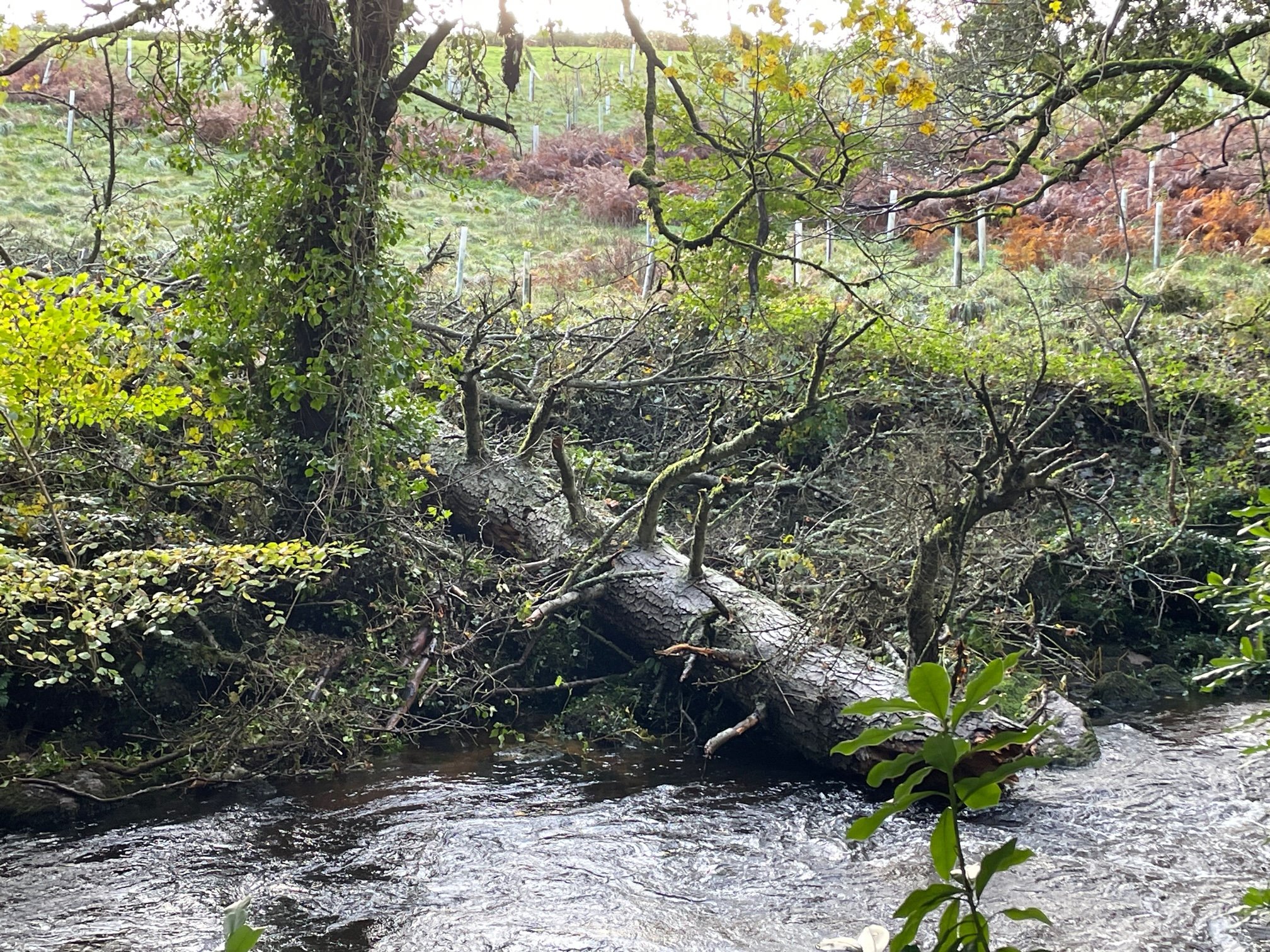We got off lightly when Storm Ciarán struck South-West England on 2nd November 2023. At the coast winds touched 90mph and they were even more extreme for Brittany, the Channel Islands, and the north French coast. Near the house we just had a few branches down, but in the National Trust wood that connects with our garden things were very different. I had a text from a neighbour at 10am telling me that he had had a close shave in the wood when the top of a tall beech tree had been blown off just metres from where he was standing. Apparently, most of it had been blown into the River Teign, but a large branch had fallen straight across the main path. Today, with the wind blustery rather than howling, I went to explore the damage. Our own stretch of the river seemed untouched, but sure enough as I ventured into the National Trust’s wood (known as Milfordleigh Plantation), I found the jagged spike of the decapitated beech standing proud, and its tangled branches covering the river bank.
Part of the fallen beech in Milfordleigh Plantation, National Trust
Before I lived here in Murchington, I had no idea that trees regularly shed their tops in extreme wind. It makes perfect sense if the alternative is being uprooted by the sheer force of nature. In the first winter storm of 2017, not long after we moved in, the top 3 metres of a massive Douglas Fir by the river was blown clean off, leaving a jagged, glistening scar of torn wood pointing to the heavens. Within a year regrowth hid the scar. Within three it became hard to tell that the Douglas had ever lost its top - the flat profile and multiple sprouting shoots are the tell-tale sign.
The decapitated Douglas Fir in 2023, its flat top the only clue to the violence of the 2017 storm
But trees can be, and are, uprooted. When I walked a few metres further into Milfordleigh Plantation, beyond the fallen beech, I realised that this must have been the fate of at least one of the wood’s giant conifers. Through the dense undergrowth I glimpsed the sight of a massive trunk jammed between a small island and the opposite bank of the river. It was obviously newly felled, and given its massive size it seemed unlikely to have travelled far down stream.
The swollen River Teign with the wedged conifer trunk just visible through the trees
Sure enough, perhaps eighty metres further into the wood I caught sight of the upper half of a giant tree lying sprawled across the field on the other side of the river. As I got closer, I also saw the disturbed earth and damaged shrubs that flagged where the tree had once stood: close by the bank of the Teign.
The hollow left by the fallen tree - with apparent signs of weakening by fungal attack
All that could now be seen was a big hollow and some rotten fragments of the tree’s base. Incredibly, none of the tree could be seen in the river, only the upper section on the other bank. I can only assume that the trunk was shattered by the impact of the fall and the river, in full spate because of the storm, did the rest. Driving the main section of the tree downstream, conveniently clearing the way for the white-water kayakers who brave the river in winter.
The top of the stricken conifer lying on the river’s southern bank
We can only hope that there won’t be too many wild storms this winter, but climate change isn’t on our side with that one. As the Earth warms its winds become fiercer and its clouds carry more water. I doubt whether the stricken conifer will be the only casualty of the weather this Autumn and Winter.





